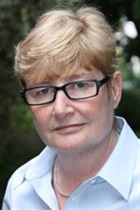The SABC recently released its radio rate card effective from 1 November 2014 with a supporting letter and an accompanying document entitled 'Optimising SABC Radio'.
The good news for media agencies and marketers is that SABC Radio has been working on an internal process of change and improvement. The decision to segment the radio portfolio based on common psychographics makes sense. A focused, educated sales force provides better service to media agencies and, in turn, generates more revenue for the media owner.
These segmentations were generated through a review of multiple data sources - the All Media and Products Survey (Amps), the Unilever Majority Report and the Target Group Index (TGI). It is tempting to quibble about the value of using TGI data to track the evolution of the vernacular stations. TGI focuses on the urban market, while the vernacular stations have a significant rural component. To give just two examples, about 75% of Phalaphala FM's audience live in settlements and non-urban areas, and for Ukhozi the figure is 48%. However, the SABC wisely used a multi-source approach.
Obviously, the African language stations (ALS) fit easily together, serving "the highly aspirational, connected, rooted, relevant and evolving dominant market". The so-called MG5 portfolio contains the national stations, 5FM and Metro, and the regional GoodHope FM. While these stations may speak to a youthful market, it is difficult for planners to incorporate regional stations into a national mix without having a strong argument for the need to increase exposure to particular areas. The SABC will have to provide that argument and also look at some clever packaging to make the offering viable.
The composition of the Fortune 4 (indicating affluence) is slightly tenuous being billed as a "mature, rooted, legacy-driven and settled B2B audience". In essence, RSG and SAFM are public broadcasting service (PBS) stations; Lotus is distinctly culturally based; and Radio 2000 is evolving from a 'portmanteau' station carrying overflow sport and national interest programmes.
The document highlights the growth of SABC radio audiences "with a gain of over two million listeners in the last year alone". Obviously natural population growth contributes to that, and referring to actual numbers rather than market penetration is one of the oldest media owner tricks in the book. To be fair, however, many SABC radio audiences have been edging upwards.
The contention that SABC radio audiences have evolved is indisputable. That is simply part of the evolution of South Africa as a whole, and the changing profile of spending power in this country. The Unilever report has highlighted this. For SABC Radio, the shift from having 51% of its audience falling into LSM 1-4 to having 61% of it falling into LSM 5-8 is massive. The document provides various statistics to suggest the significance of this economic shift. For example, it states, "72% of the middle market is now banked versus 54% 10 years ago". Unfortunately, it fails to quantify what the value of this growth in spending power has been.
The document then, very succinctly demonstrates the degree to which the ALS portfolio is undervalued. Using the neat mechanism of "ad revenue per listener by radio media group relative to average day audiences", it shows that the ALS revenue is on average R48 compared with R500+ of commercial stations. At the far extreme of aggressive pricing, Primedia succeeds in generating a massive R1,732 per listener. While these figures are based on AdDynamix and therefore reflect rate card figures rather than actual revenue, the point is forcefully and alarmingly made.
While it is impossible to argue with the broad principles that SABC Radio has put forward, it is not clear what is intended by its resolution to price its audience in line with fair market price in relation to its audience profile. The new rate card reflects on an overall rate increase of 17%. Quite clearly this does not go a long way to redressing a situation where the ad revenue generated per capita by all SABC stations is less than 20% of its commercial competitors! This then is the first salvo in an ongoing campaign.
What the industry needs SABC Radio to be clear about is what constitutes fair pricing, and over what term it is looking to achieve its objective. We can anticipate that the media agencies will certainly take up general manager SABC radio sales Eugene Zwane's offer to feel free to call SABC if they wish to raise any matter.
The mechanism of ad revenue per listener has adroitly spotlighted the audacity of Primedia's pricing, and it is to be hoped that the media agencies will be galvanised into addressing this constructively.
The timing for this readjustment on SABC's part could hardly be worse. Advertising investment is running below the rate of inflation. Long gone are the heady years of 2011 and 2012 when, according to AdDynamix (12 months ending July) radio investment soared by 25% and 26% respectively. Stagnant budgets mean that this rate absorption will be impossible. Either radio campaigns will be diluted or other media will feel the pain. It could well be the latter because SABC radio really does have a stranglehold on the "evolving majority".
